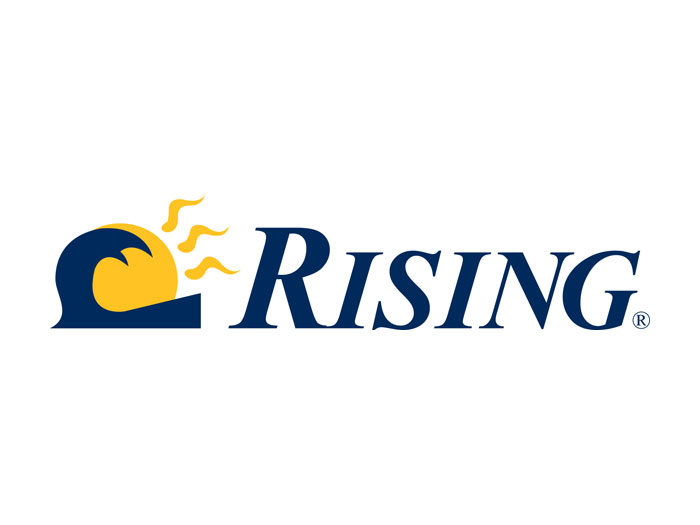How Rising Rates Impact Underwriting — and the Solutions Insurers Are Working Toward

One trend in the insurance industry is clear: Rates are rising.
“The market is in transition,” explained Chris Kopser, president of global risk management, North America, AXA XL. “It’s an evolving market driven by the change in the loss landscape.”
According to Kopser, the industry has had persistent high loss ratios despite rate increases in the primary market since 2013. For him, it comes down to two central themes: an increase in frequency of severe losses and an increase in litigation with ever higher verdicts resulting in a loss cost trend that’s outpacing rate change.
Donnacha Smyth, president of excess casualty, North America, AXA XL, added that these trends aren’t just impacting lines on the primary side; it’s a “similar story for excess casualty as well,” he said.
“We’re definitely a market in transition,” said Smyth. “Within excess, we have faced nearly a decade of reducing rates. The rate we’re charging today is 80% of the rate the industry charged in 2004 for our lead U.S. book.”
Rising rates impact more than the insurer. It’s a challenge for underwriters, for brokers and the clients who may not have anticipated this increase and did not budget for it.
Kopser and Smyth sat down with Risk & Insurance® to further discuss some of the evolving primary and excess casualty market conditions and their impact on the industry at large. Here’s what they had to say.
A Rise in Litigation
There are several factors that are coming together to drive rate increases industry wide.
Frequent active shooter events, concussion litigation in the NFL, e-cigarettes and vaping, climate change impacts, volatile wildfire seasons, sexual assault and molestation claims, the investment in technology and automated processes — every single one has played its role.
But the biggest driver seems to be the claims that make their way into the court room.

Chris Kopser, president of global risk management, North America, AXA XL
“We have named it the frequency of severity,” said Kopser.
“Usually in our business, you either have frequency or severity. But really what we’re seeing is frequency of severity — the rate of severe claims is increasing and so is the percentage of litigated claims.”
Nuclear verdicts reaching millions — and even billions — of dollars in jury awards are becoming commonplace. A massive shift in how juries attribute liability is contributing to rate increases as well, and rising litigation and rising defense costs are placing defendants on the hook.
“The nuclear verdicts, the very aggressive litigation, large settlements, social inflation, the impact of millennials on the jury pool, even the involvement of third-party litigating financing — all this has had an impact,” said Smyth.
“And,” he continued, “it’s forced the market to realize that claim inflation wasn’t really going at 4% or 5% or 6%; it was something much greater accelerating the reserve deterioration within the balance sheets.”
Kopser used auto as an example.
With the strong economy and unemployment at an all-time low coupled with commercial drivers aging out of the workforce without younger drivers replacing them, a driver shortage has opened up and widened for trucking fleet owners.
According to the American Trucking Association, driver turnover rate for large truckload carriers jumped 6% in 2018. Large truckload carriers had a 94% driver turnover rate — which is a 20% increase from the turnover rate in the first quarter of 2017. Proper training is a necessity for these drivers, but the case could be made that they lack experience.
The strong economy plus low fuel costs has led to more people on the road as well.
“Higher utilization of the road means higher density of traffic means a higher probability of crashes,” said Kopser.
Not to mention, new technologies are attracting drivers’ attention. Distracted driving, according to the National Highway Traffic Safety Administration, results in more than 1,000 injuries and eight deaths daily. While 48 states bar texting and driving, only 20 states ban drivers from using hand-held cellphones entirely while operating a motor vehicle, according to the Insurance Institute for Highway Safety.
And when a commercial vehicle accident does occur, especially one involving a tractor trailer, it is more frequently being litigated. When litigation results in a jury trial “jurors, more recently, have tended to want to send a message when they deliver a verdict with increasingly high awards, to send a message to a company that they feel wronged the plaintiff.”
“Five years ago, we thought the first $50 million was a working layer in commercial auto,” said Smyth. “As an underwriter, if you’re going to offer capacity and you’re sitting in excess of $50 million or $100 million, you’ve got to feel comfortable you’re really only offering a catastrophic coverage.
“But now we’re seeing these frequency of awards that get to that excess layer of $100 million,” he said. “That becomes unsustainable.”
The Impact on Underwriting
Nuclear verdicts and their impact on rate are also affecting how insurers approach underwriting.
“If we went back 10 years, the largest claim was around $40 million for a commercial auto loss,” said Kopser.
“So when you see these rate increases that we’re getting in primary and the dramatic shift that the excess market, as Donnacha has pointed out, has had to take, it’s really about survival for the industry, for us to continue to write these lines of business.”
He added this is not isolated to AXA XL: “This is industry wide.”
Smyth added that in this environment of aggressive litigation and nuclear awards, insurers have even started to ask if they should limit capacity.
“Do we continue to offer capacity in certain industry segments that we see are prone to losses or incidents that lead to litigation?” he said. “Or do we limit that capacity?”
Continued litigation of certain claims may lead insurers to exclude coverage as well.
Large jury verdicts also lead to larger settlements. The concept of “today’s ceiling is tomorrow’s floor” applies. A large verdict today becomes the damages-demand starting point for tomorrow’s claim with similar attributes.
Some coverage, however, can’t be excluded. Instead, insurers are looking at the outcomes of previously litigated claims and approaching underwriting from there.
Using auto as an example again, Kopser said failure to follow policy and procedure is one area a plaintiff attorney will target. “We have seen large claims linked to a policy or procedure not being followed,” he said.

Donnacha Smyth, president of excess casualty, North America, AXA XL
“So in the underwriting process, we ask, ‘Do you have policies and procedures in place? Do your drivers follow them? How do you track them and if necessary, can you prove they are followed?’ ”
He said they will also look at how drivers are hired and if DMV records are reviewed in the hiring process and monitored post-hiring.
“We will also review if a client’s fleet employs collision avoidance technology and telematics/driver monitoring, as well as vehicle maintenance procedures and records surrounding both to understand the risk we’re underwriting.
“We’re guided by claims outcomes and what has led to very large awards,” he said.
For other areas, Smyth added that underwriters will also look at the local jurisdiction of their insureds.
“We start to identify in which jurisdictions heavy awards are coming from,” he said. And that will lead the insurer to add exclusions to policies or simply not offer coverages to avoid having a claim reaching the court.
“But, even that has changed,” Smyth continued. “We have seen large verdicts coming from what had previously been deemed conservative jurisdictions.”
It’s a Team Effort
First and foremost, Kopser said, to best identify and target the risks that are driving rate increases, insurers, brokers and clients have to work together.
“I think number one is to acknowledge the trends are there,” he said. “Next, we have to decide to address them as a team.”
“It’s also about learning from industry events,” added Smyth. “If you think of a mass shooting, like the hotel in Las Vegas or the church in Texas, it’s about learning from those experiences and adapting a safety procedure to try and ensure that events like that can’t occur at another premises or business.”
Crisis management, open communication and working with the insurance team as a partner allows for transparency.
“Working in consultation with your insurer is key to maintaining a solid relationship,” said Smyth.
He continued, “We underwrite each risk individually. We don’t put out an edict to our underwriters and say, ‘You must non-renew all these risks,’ or ‘You must increase your rates by 15% across the board.’ We underwrite each risk individually, taking into account each’s exposures and needs.
“However, given the change in litigation and frequency of severity, it is clear the industry needs sustained rate increase to remain viable.” &










